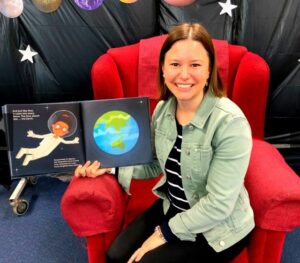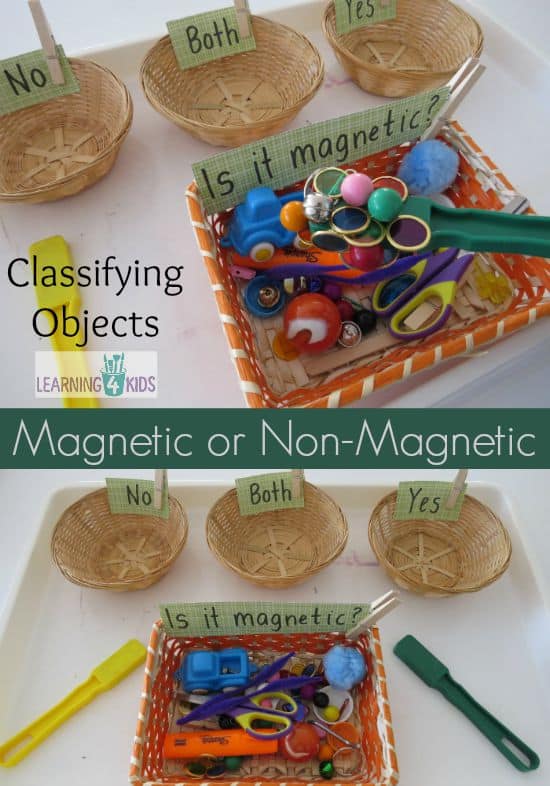
What is magnetic? Sorting and Exploring Materials is a fun science concept for children to explore magnets. Setting up a Magnetic Sorting Tray will invite them to play, experiment and explore how and why different objects are magnetic when placed next to a magnetic wand and why others are not.
What you will need?
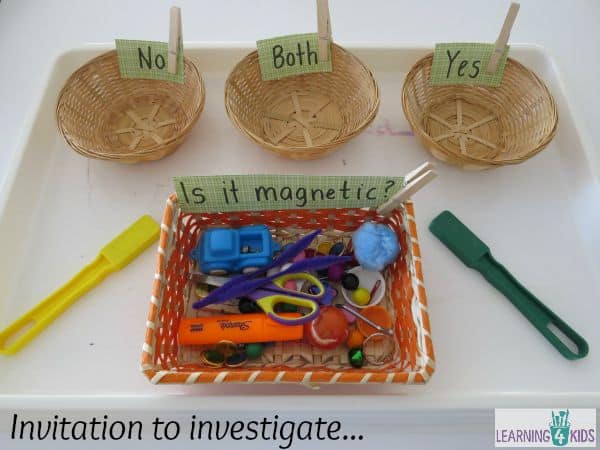
You will need a magnetic wand, 4 baskets, labels and a mix of magnetic and non-magnetic items.
You can place just about any item in the basket, here are some ideas: magnetic numbers or alphabet letters, toy cars, magnetic marbles, pompoms, bells, bottle top lids, pencils, crayons, magnetic counting chips, craft sticks, pipe cleaners, pegs, scissors, paper clips, nut and bolts and so much more.
Books about Magnets
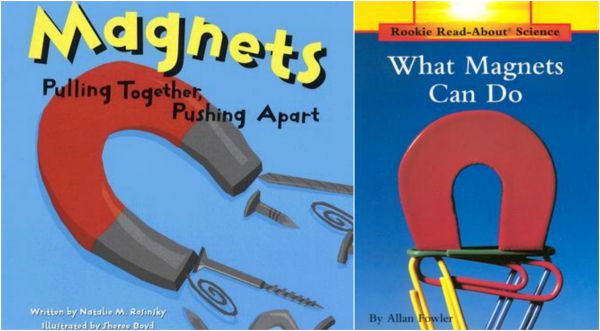
What Magnets Can Do? by Allan Fowler
Magnets : Pulling Together, Pushing Apart by Natalie M Rosinsky
Let’s Play
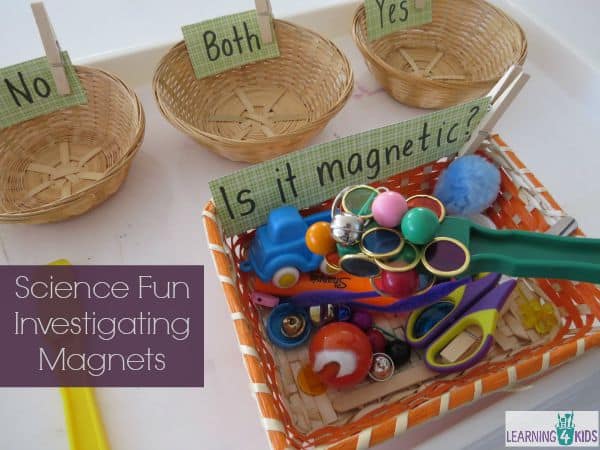
We started off by placing the magnetic wand into the basket to see what would happen.
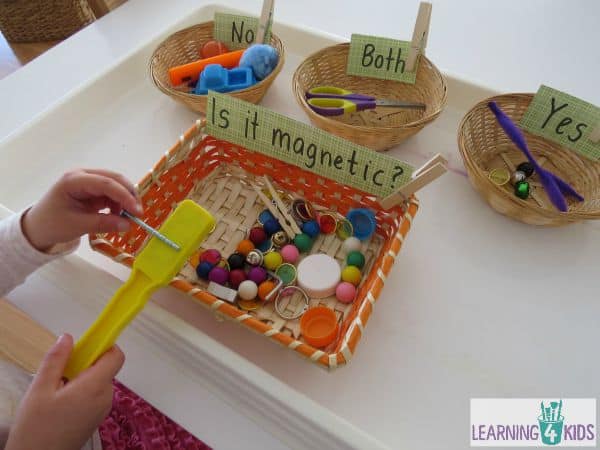
Children use a magnetic wand to test a variety of objects in the basket to see if they are magnetic or non-magnetic. They classify the objects into the labelled baskets, no, yes or both. A few items in the basket have magnetic and non-magnetic parts. This is a great conversation starter to discuss materials.
Some Ideas:
- Pick up one item at a time and place the magnetic wand over it. Is it magnetic? Place the object into the corresponding labelled container.
- Talk about why some objects were magnetic and others were not.
- Read books about magnets.
- Walk around the house or classroom with the magnetic wand to find more objects to test if they are magnetic or not.
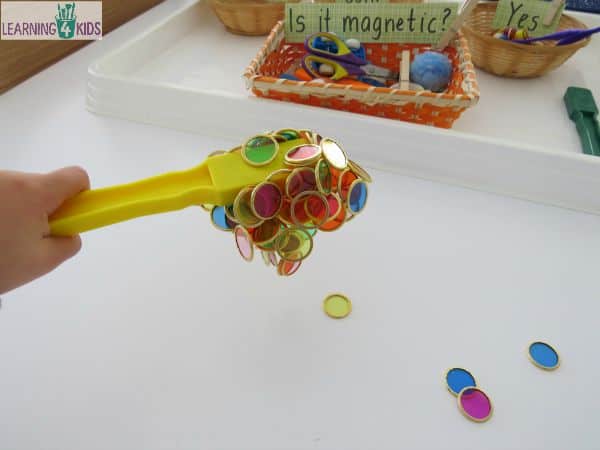
After experimenting with the different objects, allow some time for your child to play freely with the magnetic wand and objects. We have a bag of magnetic counting chips and these were perfect for this activity. Miss 5 was trying to pick all the counting chips at the same time with the magnetic wand.
Let’s Learn
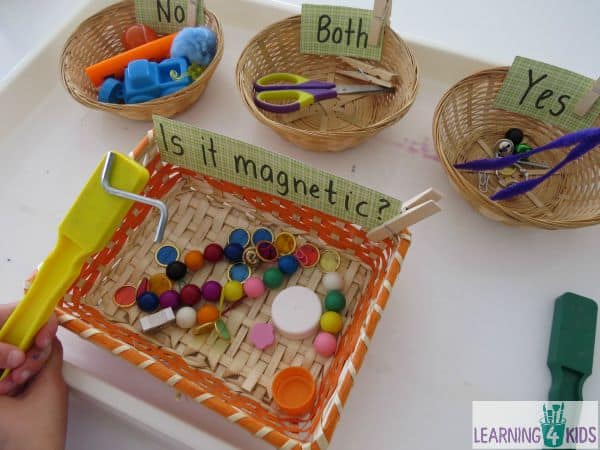
Learning Opportunities
- Language development: Using descriptive words to express ideas and opinions.
- Make connections with real life experiences.
- Promote scientific thinking: predictions, observations, comparison, reasoning, data gathering, experimentation and evaluation
- Hand-Eye Coordination and Control
- Cause and Effect
- Concentration
Click here for more SCIENCE activities & play ideas
